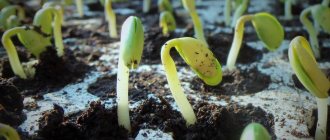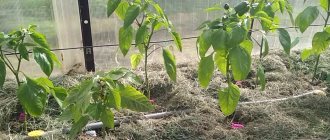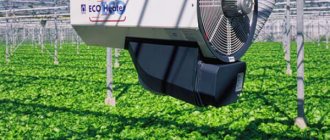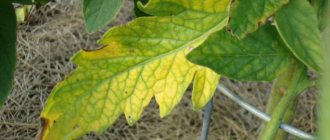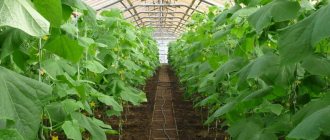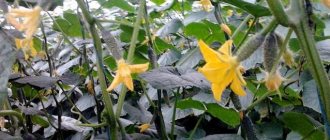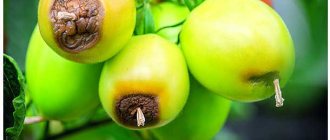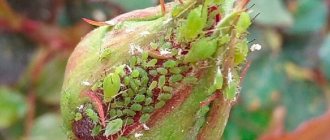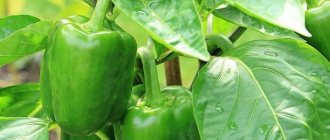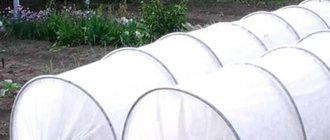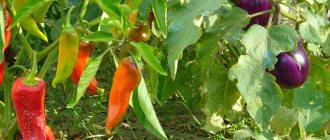Pepper is one of the most “capricious” vegetable crops, demanding adherence to agricultural practices. Summer residents often face many problems, one of which is rotting pepper fruits on the bushes. Its causes can be different, most often they are associated with non-compliance with growing rules, plant diseases and damage to insect pests. When identifying pepper rot, it is very important to determine the exact cause and take emergency measures - this will help preserve the harvest of tasty and juicy fruits.
Causes of pepper rotting in a greenhouse
I prepared the seeds, grew strong seedlings, and successfully transplanted them into the greenhouse - the plants bloomed and the first fruits began to appear. And the result of this long, painstaking work is peppers rotting right on the bush. Why did this happen? How not to lose the harvest?
pepper from the garden
First you need to correctly determine the cause of the development of rot:
- Excessive watering. Pepper is a plant that requires a moderate amount of water. It should be watered only when the top layer of soil dries 3-4 cm. Otherwise, the water stagnates, causing rot.
- High humidity. When air humidity is more than 60%, a comfortable environment is formed for the reproduction and spread of putrefactive infections.
- Unsuitable substrate. Pepper loves loose soils with a high level of humus and a low percentage of salts. The acidity is in the range of 6.0-7.0 pH. Soils with poor air permeability are not suitable: podzolic, solonchak, carbonate, peat-bog, sod-podzolic, permafrost taiga substrates are not suitable.
- Plant nutritional disorder. The seedling suffers from excess/deficiency of nutrients.
- Pathogenic fungi and bacteria. Microorganisms love dampness, warmth combined with high humidity.
- Stagnant air. Rare ventilation of the greenhouse is also a cause of rot. Air stagnation provokes an increase in humidity of both soil and air. The appearance of condensation accompanying rotting.
- Moisture on leaves, fruits. Drops of water falling on the plant also provoke rotting. You should not resort to sprinkling - water the peppers strictly at the root, only with heated water.
- Lack of lighting. The reason is improper formation of the bush, too dense planting of seedlings. Peppers need bright but diffused light. Otherwise, sluggish tops develop, some of the flowers fall off, the fruits are small, and the seedling itself is defenseless against rot and other infections. Improper planting is fraught with impaired root formation, slow growth, and low immunity to disease. Between peppers in one line - at least 25 cm, between rows - at least 60 cm.
growing peppers in a greenhouse
Preventive measures
To prevent rotting of pepper fruits, a summer resident must follow all the rules for growing vegetables.
Basic preventive measures:
- The soil in which peppers are grown must be loosened regularly. This helps destroy insect larvae that may live in the upper layers of the soil and improve oxygen access to the pepper root system. But you need to loosen the soil very carefully so as not to damage the roots of the plant.
- Seed material must be properly prepared for planting - soaked in a solution of potassium permanganate and dried.
- The soil used for growing seedlings must be calcined in the oven and spilled with a solution of potassium permanganate. This will destroy fungal spores and other pathogens.
- The optimal air humidity for growing peppers is no more than 60-70%. To maintain such conditions in the greenhouse, regular ventilation is necessary.
- Regularly monitor the soil in the garden bed. The soil around the pepper bush should always remain moist, but not wet, as excess moisture will lead to the development of rot.
- When planting pepper seedlings, be sure to leave a distance between plants of at least 20-30 cm and up to 50-60 cm between rows. Thickened plantings should not be allowed, as this leads to the rapid spread of diseases and insects.
- Bell peppers must be placed in an evenly lit area. It is best to choose a place with light shade, not in direct sunlight.
- Inspect your pepper beds regularly. When the first signs of the disease are detected, immediately remove and burn infected plants. This will help stop the further spread of fungal infection in the beds.
Fruit rot of bell peppers is a common problem faced by many summer residents and vegetable growers. The reasons for rotting of pepper may be associated with violations of agricultural cultivation techniques, damage to plants by pests, fungal and other diseases. To preserve fruits, you can use both effective industrial preparations and safe folk remedies. Treatment started in the early stages of the disease will help restore pepper immunity and preserve the harvest.
What is pepper rot like?
The next step is to determine what disease has affected our peppers:
- Gray rot. The disease develops in hot weather with increased humidity. The fruits have wet olive spots covered with gray mold. Rot can penetrate leaves and stems.
- Apex rot. This is not a disease, but a consequence of improper feeding. In particular, calcium deficiency, excess nitrogen. Top rot also develops in the case of irregular watering in hot and sultry summers. First, dry brownish inclusions appear on the pepper barrels, which quickly increase. Over time, the spots shrink inward. The peppers stop increasing in size and begin to ripen quickly for no reason.
- White spot (septoria). The disease affects the leaves - white spots with edges appear. Over time, they combine into one large spot. The tops dry out, pathogenic spores spread along the stems and fruits. The cause of the disease is contamination of the soil with the causative agent of septoria. Additional conditions include extreme temperatures and air humidity above 80%.
- Bronzing (spotted wilt). A viral infection affects many nightshades. Pale greenish, yellowish, brownish rings are noticeable on the fruits, and brown stripes near the stalk. On the tops and shoots there are necrotic brown spots, reminiscent of sunburn.
- Late blight. A very common dangerous disease of nightshades that soon spreads in a greenhouse microclimate. Light greenish spots appear on the fruits, which enlarge and darken over time. The bush dries out, curls and dies. After the plant dies, pathogenic late blight fungi enter the soil and infect neighboring plantings.
- Blackleg. A disease characteristic of seedlings, but I have also noticed it on adult peppers. It begins with blackening of the stem at the base - then rot affects the entire plant, including the fruits.
- Sclerotinia (white rot). On the stem of the seedling you will notice white spots, which in the advanced stage transfer to the fruits. The internal tissues become soaked, and sclerotia form on them - black dense inclusions. White rot manifests itself at high humidity in combination with low temperature (less than 15 ° C).
Scoops
In total, there are more than 100 species of cutworms, and therefore this phenomenon is quite common. As a rule, the moths themselves do not cause any harm to plants; attention should be paid to their caterpillars. Before moving to the fruits, they initially nibble off the edges of the leaves, unlike slugs, which prefer to eat the center. After that they move on to the peppers. Characteristic processes will notify the gardener about who he will have to deal with. As a control, it is recommended to manually collect caterpillars at night and treat them with chemical insecticides 3 weeks before harvesting. Prevention will include deep digging in spring and autumn, as well as removal of plant debris and weeding. It is imperative that you strictly adhere to the pest control schedule. As a result, whatever the reason for the appearance of rot on pepper fruits, the main thing for the gardener is to react in a timely manner and recognize the cause, this will help to begin solving it as soon as possible.
How to treat pepper rot on a bush in a greenhouse
I fight rot on peppers as soon as I notice the first signs. This is a disease that quickly spreads to healthy neighbors and turns the affected fruits inedible.
Treatment of peppers begins with creating comfortable conditions for their development. It is worth removing and destroying the affected plants. Don’t forget about stabilizing fertilizers:
- For a bucket of water: 2 tbsp. spoons of calcium nitrate, 2 tbsp. spoons of potassium carbonate. For a bush - one glass of solution strictly at the root.
- Spraying every week with 1% calcium chloride solution.
- Advanced cases include spraying with products containing copper.
Proven drugs
I’ll also tell you about effective antifungal drugs that will help your peppers:
- "Rovral" is a broad-spectrum fungicide needed for all types of rot. After treatment, the plants remain protected from putrefactive processes for another 20 days. The solution is applied to the rotting areas, and ½ is poured under the root of the plant.
- cups of 0.1% Rovral mixture. Remember that processed fruits cannot be eaten for at least 3 weeks.
- "Oxychom" is a remedy recommended against late blight. For 2 liters of water - 1 packet of the substance. An alternative is “Fitosporin-M”, “Ordan”, “Gold”, “Ridomil”.
- "Gamair" is a product containing live bacteria. Application and watering: 1 tablet per 5 liters of water. Application-spraying: 1 tablet per 1 liter of water.
- "Alirin-B". For watering: 2 tablets per 10 liters of water, for spraying - 2 tablets per 1 liter of water. Requires three treatments with 2-week breaks.
treating pepper from rot using Fitosporin-M
I will also share the chemical and biological remedies known to me for blossom end rot:
- Megafol is both a mineral fertilizer and a growth stimulant. Increases immunity, provides plantings with necessary nutrients. For 10 liters of water - 20 ml of the drug; processing - every 2 weeks.
- Potassium humate. Not only strengthens the immune system, but also increases productivity. To treat 5 acres, 5 g of Gumifield dissolved in 50 liters of water is required.
- Calcium brexil. Modern fertilizer containing calcium and boron, prevention of blossom end rot. Suitable for spraying: 2 g of product per 1 liter of water.
- "Fitosporin". The biofungicide is quite effective in the fight against blossom end rot. Suitable for the treatment and prevention of both fungal and bacterial infections. For spraying, I dilute the solution: 3 teaspoons of the drug per 10 liters of water. The big advantage is that the product is safe for humans.
- Calcium chloride. A blossom end rot treatment that should be used every week. A 0.4% solution is effective.
Folk remedies for combating pepper rot in a greenhouse
I’ll also tell you about proven and effective folk recipes that helped me fight rot on greenhouse peppers.
The following is good against blossom end rot:
- Milkshake. Per bucket - 1 liter of milk; I top up the remaining volume with water. I spray the tops and fruits with the milk mixture once a week for a month.
- Bone meal infusion. The product is effective for the initial symptoms of the disease: pour 100 g of flour into 2 liters of boiling water. I leave it for a week, after which I filter it and dilute the concentrate with 40 liters of water.
- Ash. When the peppers develop, I dust the bushes with ash and add it to the water when watering. For preventive purposes, ash infusion is good: for 3 glasses of ash - 10 liters of water. I leave it for several hours, stir it well and carefully pour it under the root.
- Calcium acetate solution. For 1 glass of chalk - 1 liter of 9% vinegar. I wait for the chemical reaction to complete, after which I dilute the concentrate in 30 liters of clean water.
- Eggshell. I grind the dried shells into powder and embed them in the soil near the seedlings.
- Chalk solution. For 1 liter of heated water - 2 tbsp. spoons of crushed chalk. I water the diseased peppers with the resulting solution.
Against the black leg, I sprinkle the soil around the peppers with 1 cup of ash mixed with 1 teaspoon of copper sulfate.
eggshells against rotting peppers
A universal remedy for fungal infection at the initial stage:
- Spraying with 1% Bordeaux mixture.
- Weekly spraying with a bright crimson potassium permanganate solution.
Another safe and effective remedy for rot is baker's yeast. From experience I can say that it is effective in the initial stages of decay and for preventive purposes. Yeast fungi actively multiply, displacing pathogenic microorganisms - this is what the effect of the folk remedy is based on. I proceed as follows:
- I dilute 1 packet of yeast and 100 g of sugar in 1 liter of warm water.
- I stir thoroughly and leave to ferment for 6 hours.
- I dilute the concentrate with 10 liters of clean water.
- I spray with yeast every 2 weeks.
Spotted wilt (bronzing)
The carriers of this viral disease are insects.
The first signs of infection appear on the leaves. The leaves take on a purple-gray hue and then become covered with brown spots of varying sizes and shapes.
As the disease develops, it moves to flowers and fruits. They form yellow-brown or light green rings.
Control measures at the initial stage of the disease are the removal of all affected parts of the plant and subsequent spraying with Fundazol, Forecast. Fungicides need to be treated not only with pepper bushes, but also with the soil underneath them.
Control methods depending on the disease
The most effective fight against rot is when we know what disease it is caused by. This gives a chance to strike an accurate blow to the disease: select the appropriate medications, adjust the conditions in the greenhouse.
If you have not determined what kind of infection has affected your peppers, refer to the universal instructions:
- Remove all affected fruit, leaves and stems.
- Carry out regular ventilation of the greenhouse.
- Reduce the volume and number of waterings.
- Thin out your pepper beds.
- Water the greenhouse thoroughly.
- Remove stepsons and side shoots.
- Treat the plantings with fungicides, copper-containing products or Fitosporin. After 2 weeks, repeat spraying.
- Disinfect the greenhouse substrate and the internal structures of the greenhouse with the same “Fitosporin”.
Apical rot
I will share my methods of dealing with blossom end rot:
- I regulate the temperature (up to 18-22° C) and air humidity (up to 60%) in the greenhouse.
- At high temperatures I increase watering, and at low temperatures I reduce it.
- I regularly ventilate the greenhouse.
- I feed weekly with formula milk: 1 liter of milk per 9 liters of water.
- I apply calcium fertilizer at the root: per 1 liter of water - 2 tbsp. spoons of chalk, crushed into dust.
- I water it with a 4% calcium chloride solution.
- If all of the above is useless, I turn to fungicide treatment. Spraying with Fitosporin is effective: 5 g of the drug per 10 liters of water. I carry out the treatment twice, maintaining an interval of 1.5-2 weeks.
To prevent the disease from returning, I eliminate the factors contributing to its development:
- I reduce potassium, nitrogen, and magnesium fertilizing and increase the volume of phosphorus, calcium and manganese fertilizers.
- I raise the temperature and gradually lower the humidity - sudden “jumps” are undesirable.
- I adjust the watering schedule.
- I bring the lighting back to normal: peppers need bright, but diffused sunlight.
Blackleg
Treating peppers for blackleg is a pointless exercise. If the stem has already turned black, you need to dig up and burn the seedling as quickly as possible so that the infection in closed ground conditions does not spread to neighboring plantings.
Blackleg can be counteracted only by timely preventive measures:
- Soaking seeds in a light pink manganese solution.
- Water the seedlings with a warm, weak solution of potassium permanganate.
- Preventive treatment of adult bushes with the antifungal agent “Fitosporin”.
potassium permanganate
Sclerotinia
From my own experience I will say that treating peppers affected by white rot rarely produces results. It is more advisable to dig up and burn diseased plants. If you notice the disease at an early stage, a copper-containing drug will help. Do not forget about disease prevention - this means regular dosed watering and mulching of the greenhouse substrate.
Spotted wilt
Only systemic fungicides will help against spotted wilt. I do not forget about the carriers of this infection - aphids and thrips. Products like Bayleton or Actellica help a lot.
White spot
First of all, I dig up and burn the affected plants. Then I use Trichodermin: 20 g of product per 5 liters of water. This volume of solution is enough to spray 100 m2 of plants.
Gray rot
If I diagnose gray rot, I act like this:
- I urgently reduce the air humidity in the greenhouse - I thoroughly ventilate the room. Otherwise, the fungus will quickly “take over” healthy seedlings.
- I remove the affected fruits, leaves and shoots, not forgetting to disinfect the instrument.
- I spray the plantings with solutions of fungicides - “Previkura”, “Fundazola”, “Skora”. I strictly follow the instructions on the packaging so as not to harm the plants. According to “Fundazol”: 1.5 g of the drug is diluted in 1.5 liters of water. This volume of solution is sufficient to treat 10 m2. To consolidate the effect, I spray twice. But remember that after processing the peppers are suitable for food in at least 2-3 weeks.
The causative agent of gray rot is the fungus Botrytis cinerea, whose spores successfully overwinter in the soil. Therefore, in the fall, disinfection of the greenhouse substrate is necessary. It is also important to eliminate conditions favorable to this fungus:
- polyethylene greenhouse coverings;
- air temperature more than 20° C;
- high air humidity;
- thickened plantings;
- mechanical damage to the plant itself.
Late blight
To prevent infection of all greenhouse peppers, I carry out:
- Spraying the affected plants with “Barrier” and “Barrier” solutions.
- Feeding peppers with iodine: 5 ml of the substance per 1 liter of water.
- Preventive spraying with 1% Bordeaux mixture.
I make sure that the temperature does not get cold and high humidity at the same time. To prevent late blight from being “inherited” by future plantings, in the fall I carefully remove plant debris and disinfect the greenhouse substrate with a “Fitophtorin-M” solution.
iodine for feeding peppers
Hypothermia
Pepper reacts sharply even to a short-term drop in temperature. Most often it suffers from hypothermia in the spring, immediately after planting seedlings in a greenhouse, if the warmth is replaced by a sharp drop in temperature.
You think that the young plants survived the cold safely because they recovered and continued to grow. But the stress from hypothermia has already affected the condition of the bushes. Their immunity has decreased, and the risk of fruit rotting has increased several times.
If your greenhouse does not have artificial air heating, after planting the seedlings, additionally cover the planted bushes with non-woven material at night. And at temperatures below + 15, do not remove the insulation even during the day.
What varieties are resistant to blossom end rot?
Another way out is to purchase pepper seeds with resistance to blossom end rot in advance:
- Agapovsky. An excellent variety for open and closed ground. Suitable for the middle zone, resistant to temperature changes.
- Latino F1. An early ripening hybrid, resistant not only to unfavorable external conditions, but also to infections and diseases.
- Eroshka. A productive variety of peppers, resistant to blossom end rot and viral infections. From one bush you can collect up to 15 full fruits.
- Miracle tree F1. A productive hybrid variety created specifically for growing in a greenhouse. Resistant to blossom end rot, develops well even in low light.
Fruit-soil contact
If the bush has collapsed under the weight of fruits or the plant is not tall and the resulting peppers lie on the ground, favorable conditions are created for the formation of rot.
The soil is always full of microorganisms, which immediately move to the fruits that come into contact with it. The tender pulp rests against pebbles and twigs, and as a result of this contact, microtraumas are formed on the surface. And this is the entrance gate for infections!
Help the pepper bushes hold a mature crop on the stem. Place a peg nearby and tie the plant to it. Place straw under low-growing bushes.
Prevention of rot on peppers in a greenhouse
The stronger and healthier your peppers are, the more resistant they are to disease, including all kinds of rot. Therefore, an important preventive measure is to provide the plantings with comfortable greenhouse conditions:
- Light, loose and fertile substrate.
- Chestnut, soddy-meadow, dark gray and gray, chernozem-meadow and chernozem soils are the most suitable for peppers.
- Stable air temperature 22-25° C.
- Air humidity no more than 60%.
- Moderate watering according to weather conditions. I navigate by the dryness of the top layer of soil.
- Regular ventilation of the greenhouse.
- Timely and sufficient fertilizers.
- Correct pinching, bush formation.
- Periodic weeding and loosening.
- Disinfection of garden tools.
Take note of these simple preventive measures:
- Before planting, soak the pepper seeds in a slightly pink manganese solution for 2-3 hours.
- Also disinfect the soil for seedlings - by freezing, calcining, treating with disinfectants.
- Disinfect garden tools before and after caring for peppers - 3-4 hours in the same solution of potassium permanganate is enough.
- In the fall, especially if the predecessor peppers were sick, pour boiling water over the greenhouse soil at the rate of 10 liters per 1 m2. Another preventive measure is to remove the top (10-15 cm) layer of greenhouse substrate and replace it with a new one.
- Water the peppers only with warm water.
- Do not plant peppers in place of tomatoes or eggplants.
- Follow the rules of crop rotation: return the pepper to its original place only after 3-4 years.
- If the soil in the greenhouse is acidified, add slaked lime in the fall, and dolomite flour in the spring.
Peppers are perhaps one of the most capricious garden crops. The plant responds painfully to transplantation, lack of heat, light, and nutrients. This makes it susceptible to infections, including rot. Therefore, it is important not only to treat the affected plants with fungicides or folk remedies, but also to constantly provide them with comfortable conditions for growth and development.
Lythracnose
A bacterial disease that originates in the roots, then penetrates the stem, and from there into the fruit. Infection occurs at the stage of sowing seeds into the soil, but may not develop if agricultural practices for growing the crop are followed. However, when plant immunity is weakened, lytracnose pathogens become active and begin to multiply.
Proper feeding of peppers and preventive treatments with Bordeaux mixture (1%) or copper oxychloride (0.4%) help to destroy pathogens. It is better to uproot and burn bushes that are heavily affected by the fungus.
Pests
Slugs
Caterpillars
Woodlice
Pepper has enough enemies - those who like to feast on the juicy pulp. All kinds of slugs, caterpillars, woodlice gnaw small holes on the walls of the fruit and penetrate inside. As a result of their vital activity, the pepper begins to rot.
Expert opinion
Mishina Valentina Georgievna
Gardener with 20 years of experience and rich experience
If you notice fruits with small holes, remove them from the beds. To protect against pests, place traps in the greenhouse. Cut plastic bottles in half, dig to the brim into the soil in the pepper beds and fill 1/3 with beer or sweet liquid. The devices work well against slugs and woodlice. Pests enter the liquid, attracted by the smell, and die. The contents of the traps need to be changed every 3 to 4 days.
